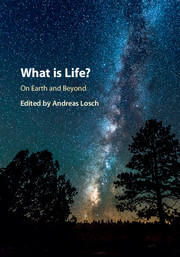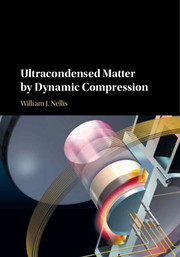Refine listing
Actions for selected content:
17002 results
15 - What is Life? On Earth and Beyond: Conclusion
- from Conclusion
-
-
- Book:
- What is Life? On Earth and Beyond
- Published online:
- 08 July 2017
- Print publication:
- 13 July 2017, pp 303-310
-
- Chapter
- Export citation
6 - What is Life? And Why is the Question Still Open?
- from Philosophy
-
-
- Book:
- What is Life? On Earth and Beyond
- Published online:
- 08 July 2017
- Print publication:
- 13 July 2017, pp 111-131
-
- Chapter
- Export citation
10 - What Theology can Contribute to the Question “What is Life?”
- from Theology
-
-
- Book:
- What is Life? On Earth and Beyond
- Published online:
- 08 July 2017
- Print publication:
- 13 July 2017, pp 201-212
-
- Chapter
- Export citation
13 - Life in the Universe, Incarnation and Salvation: A Conversation between Christianity and the Scientific Possibilities of Extra Terrestrial Life
- from Theology
-
-
- Book:
- What is Life? On Earth and Beyond
- Published online:
- 08 July 2017
- Print publication:
- 13 July 2017, pp 260-286
-
- Chapter
- Export citation
Additional material
-
- Book:
- What is Life? On Earth and Beyond
- Published online:
- 08 July 2017
- Print publication:
- 13 July 2017, pp ii-ii
-
- Chapter
- Export citation
Preface
-
- Book:
- What is Life? On Earth and Beyond
- Published online:
- 08 July 2017
- Print publication:
- 13 July 2017, pp xi-xii
-
- Chapter
- Export citation
Introduction
-
-
- Book:
- What is Life? On Earth and Beyond
- Published online:
- 08 July 2017
- Print publication:
- 13 July 2017, pp 1-10
-
- Chapter
- Export citation
Dedication
-
- Book:
- What is Life? On Earth and Beyond
- Published online:
- 08 July 2017
- Print publication:
- 13 July 2017, pp v-vi
-
- Chapter
- Export citation
Contents
-
- Book:
- What is Life? On Earth and Beyond
- Published online:
- 08 July 2017
- Print publication:
- 13 July 2017, pp vii-viii
-
- Chapter
- Export citation
14 - Talking Lions, Intelligent Aliens, and Knowing God – Some Epistemological Reflections on a Speculative Issue
- from Theology
-
-
- Book:
- What is Life? On Earth and Beyond
- Published online:
- 08 July 2017
- Print publication:
- 13 July 2017, pp 287-300
-
- Chapter
- Export citation
11 - Autopoietic Systems and the Theology of Creation: On the Nature of Life
- from Theology
-
-
- Book:
- What is Life? On Earth and Beyond
- Published online:
- 08 July 2017
- Print publication:
- 13 July 2017, pp 213-235
-
- Chapter
- Export citation
Contributors
-
- Book:
- What is Life? On Earth and Beyond
- Published online:
- 08 July 2017
- Print publication:
- 13 July 2017, pp ix-x
-
- Chapter
- Export citation
Copyright page
-
- Book:
- What is Life? On Earth and Beyond
- Published online:
- 08 July 2017
- Print publication:
- 13 July 2017, pp iv-iv
-
- Chapter
- Export citation
7 - Is the Origin of Life a Fluke? Why the Chance Hypothesis Should Not be Dismissed Too Quickly
- from Philosophy
-
-
- Book:
- What is Life? On Earth and Beyond
- Published online:
- 08 July 2017
- Print publication:
- 13 July 2017, pp 132-155
-
- Chapter
- Export citation
5 - Science and Philosophy Faced with the Question of Life in the Twentyfirst Century
- from Philosophy
-
-
- Book:
- What is Life? On Earth and Beyond
- Published online:
- 08 July 2017
- Print publication:
- 13 July 2017, pp 97-110
-
- Chapter
- Export citation

What is Life? On Earth and Beyond
- On Earth and Beyond
-
- Published online:
- 08 July 2017
- Print publication:
- 13 July 2017

The Atmosphere and Climate of Mars
-
- Published online:
- 05 July 2017
- Print publication:
- 29 June 2017

Cometography
- A Catalog of Comets
-
- Published online:
- 04 July 2017
- Print publication:
- 20 April 2017

Ultracondensed Matter by Dynamic Compression
-
- Published online:
- 04 July 2017
- Print publication:
- 15 May 2017
5 - Mars Clouds
-
-
- Book:
- The Atmosphere and Climate of Mars
- Published online:
- 05 July 2017
- Print publication:
- 29 June 2017, pp 76-105
-
- Chapter
- Export citation
